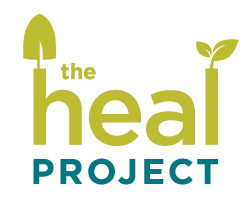The Evolving Value of School Gardens
By Roger Hoppes
The history of school garden programs includes:
A) the late 1800s in both rural and urban communities
B) the victory gardens during World War II
C) support for science education over the last thirty years
D) all of the above
“All of the above” is the correct answer. A very early school garden movement began in the late 1800s. The initial purpose of these rural school gardens was to encourage kids to continue living in their farming communities rather than migrate to expanding industrial cities in search of jobs. This approach became known as the Nature-Study Movement. As one historian described it, “the idea of the Nature-Study Movement was to keep rural kids on the farm by teaching them to love the earth.” Progressive educators in urban areas took notice of the movement, and in 1891 the first city school garden program was created in Massachusetts. The idea spread as schools struggled to both integrate and teach a rapidly growing immigrant population. One school garden site was even called the Good Citizen Factory.
Government support for the U.S. School Garden initiative increased during World War I with a more practical reason in mind: food security. The first war-time school gardens, called “victory gardens,” increased both in size and intensity with the new government funding. When the war ended, the funding effort also unfortunately ended, as did this period of school gardens.
While school garden programs became much less practical without funding, their value was not completely forgotten. Victory gardens once again found their place during World War II with school grounds providing a prime location.
After WWII school gardens once again faded from the daily routine. Throughout the past thirty or so years, however, they have seen a resurgence, this time with the direct purpose of supporting the learning curriculum. (Interestingly, school gardens have also taken root in many other countries, illustrating the core value agriculture has in our collective societies.)
2. In recent decades, school gardens:
A) are viewed as a very useful support activity for education
B) can increase outdoor exercise and counter some consequences of youth sedentariness
C) may convey the principles of a good diet and an overall healthy lifestyle
D) play an acknowledged role in building an environmental ethic
E) all of the above
Once again, “all of the above” is the correct answer. School gardens have taken their place as an effective, hands-on activity to support a STEM curriculum. This curriculum seeks to integrate science, technology, engineering and mathematics in a holistic approach, gaining further reinforcement through “practical applications.” California’s Next Generation Science Standards partners effectively with student engagement in garden programs, whether as a field trip to a local farm or through regular participation in their school garden plots.
Young people today are growing up in a world where an abundance of digital stimuli wedges out time spent on physical activity. Childhood obesity, nearsightedness and diabetes are on the rise. The associated decrease in activity levels, increase in time spent inside, and trend towards unhealthy diet choices are creating major health concerns. One estimate predicts that the current 18% obesity rate in the overall U.S. population will reach 50% in just ten years! Additionally, a recent research review revealed the likely link between the risk of cancer and unhealthy diets, lower activity levels and time spent indoors. A school garden curriculum can provide a contrarian set of activities based on food production and the preparation of a healthy diet. Through these lessons, students come to understand they can make diet choices and that a healthy nutrition plan can benefit their lives.
Students at The HEAL Project’s farm learning about veggies.
Physical activity and exposure to green spaces have become acknowledged assets fostering a student’s learning potential. In this regard, the Children and Nature Network has created extensive material including teacher guides supporting the advantages of moving the classroom outdoors (“green schoolyards”). In general, the goal of these initiatives is to counterbalance the negative childhood trend often termed nature deficit disorder. Physicians today are even writing prescriptions for outdoor time, thereby acknowledging nature’s healing properties. Studies have also recently revealed a better state of adult mental health when as children they spent more time in an outdoor setting. Even environmental groups like the Sierra Club have acknowledged the advantage gardening can provide. Through their Nearby Nature initiative, the Sierra Club is “empowering young people to explore the role that school and community gardens play in improving access to healthy foods and nearby greenspace, supporting environmental education, strengthening communities, and protecting our environment.”
By offering intensive classroom engagement with local schools, farm field trips for students from San Mateo County, and summer camp experiences, The HEAL Project seeks to create a long-term pathway for students. While The HEAL Project emphasizes healthy diet choices and associated benefits, their programs also encourage students to build relationships with the natural environment.
3. The HEAL Project:
A) supports core elements of a healthy lifestyle
B) bolsters positive learning through engagement with the outdoors
C) connects students with California’s Environmental Principles and Concepts and other core standards
D) embraces the early school garden initiative of the Nature-Study Movement by continuing to teach kids to “love the earth”
E) all of the above (hint)
—
Roger is on our board of directors. He completed graduate school at UC Berkeley. Throughout his 30+ year career at the San Francisco Zoo, Roger found many outlets for his interests as a curator and as head of zoo operations. As a current board member and docent for Fitzgerald Marine Reserve, he applies his background in environmental education.



